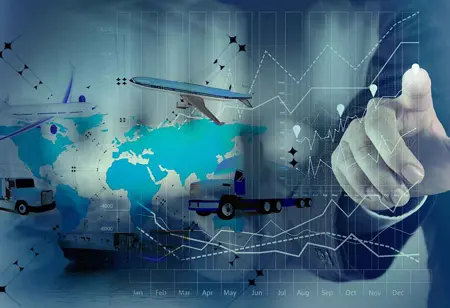THANK YOU FOR SUBSCRIBING
THANK YOU FOR SUBSCRIBING

By
Logistics Transportation Review | Monday, August 21, 2023
Stay ahead of the industry with exclusive feature stories on the top companies, expert insights and the latest news delivered straight to your inbox. Subscribe today.
Due to its relatively low energy density compared to crude oil, transporting natural gas presents challenges and costs. Liquefied natural gas (LNG) carriers and long-distance pipelines are the primary methods for transporting internationally traded natural gas. This article explores the economic analysis of these transportation modes and their impact on the global natural gas trade.
Fremont, CA: Transporting natural gas from production sites to end consumers is a complex and costly endeavor, primarily due to its lower energy density in comparison to crude oil. Liquefied natural gas (LNG) carriers and extensive long-distance pipelines serve as the predominant solutions for moving natural gas across vast distances as a gaseous fuel. This chapter delves into the economic considerations surrounding these intricate methods, often involving substantial upfront investments and intricate risk-sharing mechanisms.
The disparity in energy density between natural gas and crude oil renders natural gas a challenging and economically demanding primary fuel for long-distance transportation. Internationally traded natural gas relies heavily on LNG carriers and extensive pipelines to bridge the geographical gaps.
The costs associated with international natural gas trade are significantly influenced by the transportation segment, accounting for more than half of the total expenses. This reality historically confined natural gas consumption to local markets, closer to its point of production. However, the emergence of LNG export facilities and extensive pipelines during the 1960s and 1970s facilitated the gradual growth of regional natural gas trade.
The evolution of interregional traded gas witnessed a noteworthy shift. In 1975, only a fraction of total consumption—less than 5 percent—represented interregional traded gas. Over the decades, this percentage surged to 15 percent by the early 2000s and further to 21 percent in 2018. In comparison, a quarter of globally produced crude oil was traded in 2018, with an increase from half in 2017.
LNG exports have witnessed a remarkable surge, tripling in volume since the start of the century and accounting for over 50 percent of the international gas trade in 2018. While pipelines historically dominated international gas trade, the rapid growth of LNG exports has reshaped the landscape. Notably, the Asia Pacific region's robust gas demand growth has limited alternative supply options apart from LNG.
Although additional technologies and methods for harnessing and transporting methane's energy value exist, their utilization remains confined to local markets. The article emphasizes the economics underpinning the international natural gas trade, focusing on extensive long-distance pipelines and large-scale LNG facilities. Additionally, it explores emerging trends such as transporting compressed natural gas (CNG) containers and LNG ISO tanks via truck and rail, which play a vital role in catering to burgeoning markets with nascent pipeline infrastructure.
I agree We use cookies on this website to enhance your user experience. By clicking any link on this page you are giving your consent for us to set cookies. More info





